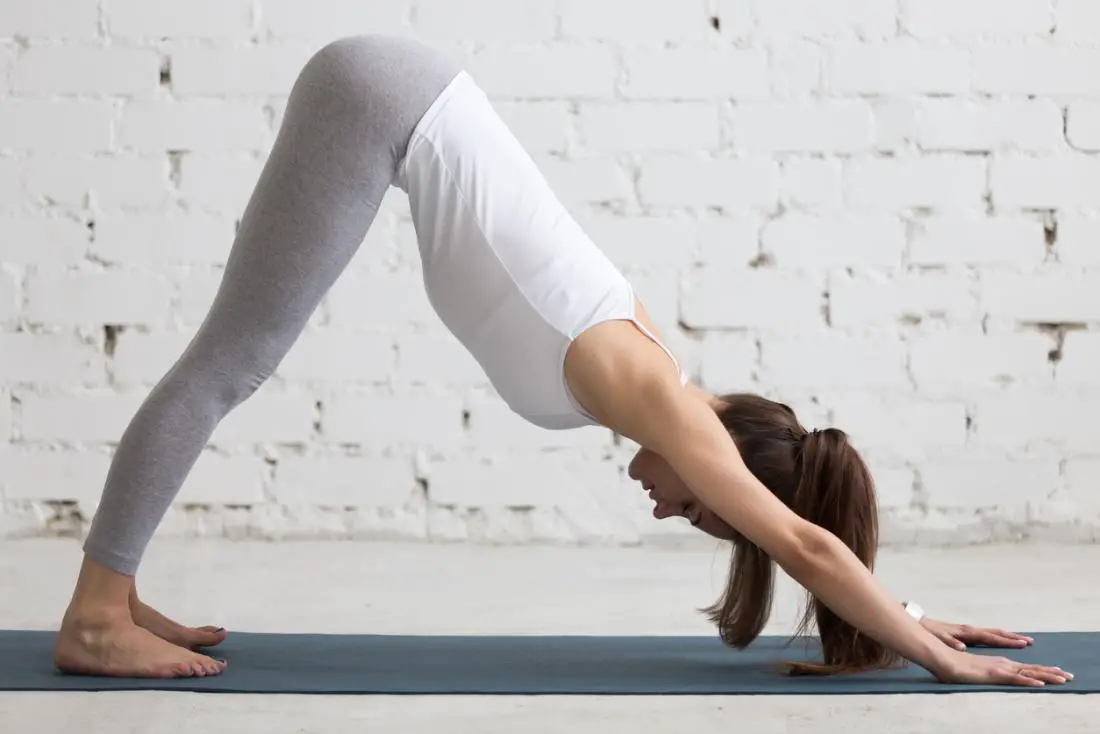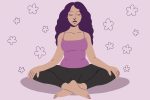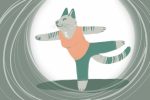The prospect of beginning a new day, especially if you have early classes to get up for, can be daunting. With backpacks to pack, makeup to do, hair to style and last-minute homework to finish, it can be hard to fit in time to relax and care for yourself.
However, it’s important to start your day off with a calm, relaxed mind and body. One easy and quick way to loosen up muscles, clear your mind and prepare yourself for the day is to set aside ten to fifteen minutes each morning for stretching and meditation. While it can be difficult to fit yoga into a busy routine, eventually you’ll find that the benefits of stretching outweigh any inconveniences caused by the slight shift in your schedule.
If you want to increase flexibility, clear your mind and relax before going out into the stressful world of college and socialization, here are five awesome yoga poses to wake you up and get you ready to face the day ahead.
1. Mountain Pose
Mountain pose, also known as palm pose, is a simple and easy-to-do pose that improves posture, balance and helps calm your mind and center your body. Because it is among the most fundamental and basic yoga poses, I always start my day with this stance. It’s the base from which all other standing poses are born, making it the perfect beginning to any stretching routine. When done correctly, mountain pose utilizes almost every muscle in your body and can even help reduce back, neck and shoulder pain.
To do mountain pose, you simply stand with your feet together and your arms down by your sides. Since this pose is a moving pose, make sure that your weight is evenly distributed between the heels and balls of your feet, providing a strong base. Imagine your feet pressing down into the ground until you’re as strong and immovable as a mountain. Next, lift your arms slowly to the sides, inhaling deeply and allowing your chest to broaden while tucking in your belly. Point your pelvis straight ahead.
As you exhale, draw your hands together into a prayer pose with your thumbs resting against your breastbone. Feel the upward stretch of your torso, drawing yourself up without destabilizing the immovable base of your feet. Then, let your hands slowly fall back to your sides, and repeat the process as many times as you wish.
2. Downward and Upward Dog
Downward and upward dog are two poses to increase back flexibility and core strength. Like mountain pose, downward and upward dog can help reduce back and neck pain by stretching and loosening muscle groups often affected by tension and stress. Unlike mountain pose, upward and downward dog put direct pressure on the shoulders, so if you have shoulder pain or issues, it might be better to leave this one out of your routine.
To perform downward-facing dog, position yourself so that your feet and hands are evenly supporting the weight of your body and your belly, with the chest and pelvis aimed downward. Make sure that your feet aren’t pressed together; they should be about as far apart as the width of your hips, or even a bit wider. Likewise, keep your hands pressed palm-down and a little more than shoulder-width apart, allowing the weight of your body to flow down through your arms, out of your palms and into the floor. Stick your butt up into the air, keeping your back flat and your head lowered. Relax the spine and shoulder while drawing the hips toward the ceiling. If you’re flexible enough, draw your heels down until they’re resting on the floor, providing a wonderful stretch for your hamstrings.
Once you’ve held downward-facing dog for five seconds or so, inhale deeply as you swoop down and draw your chest and head up toward the ceiling, pushing your pelvis toward the ground. At this point, the fronts of your thighs should be pressed against the floor or mat, supporting some of your weight along with your curled toes and extended arms. This is upward-facing dog pose. When you’ve held it for a few seconds, exhale and push back into downward-facing dog, repeating this transition as many times as you want.
3. Standing Forward Bend
Standing forward bend is known for increasing flexibility in both the arms and backs of the legs. It’s also great for relieving tension in your spine, back, neck and shoulders, as the downward pull of gravity loosens and stretches muscles that become tight and knotted.
To do a standing forward bend, stand with your feet together and your arms by your sides, just as in the beginning of mountain pose, and inhale deeply. Then, as you begin to bend forward, exhale slowly, releasing the tension in your body and relaxing your muscles. Reach down toward your toes, stretching only as much as is comfortable. If you can’t quite reach, don’t worry. You can also perform this pose by grabbing your ankles, or sliding your hands down your shins. The point is to get a good stretch going in your back and hamstrings, as well as up the backs of your thighs. If you do this pose often, you should notice your flexibility and reach improving over time.
4. Cat/Cow
Like downward-facing and upward dog, cat/cow pose moves between upward-arching and downward-facing positions. The resulting stretch is felt all along your back, in your arms and, in the case of cat/cow, down through your thighs and in your core.
To do the cow part of cat/cow pose, begin with your hands and knees pressed flat against the floor. Preferably, perform this pose on a yoga mat or other soft or foamy surface to keep from putting unnecessary strain on your kneecaps. Once your base is stable enough, exhale as you gently arch your back down, pressing the middle of your belly toward the ground. Lift your face skyward, pressing down into the floor through the palms of your hands. The resulting stretch should be felt all down your back, across your shoulders and chest.
To move from cow to cat pose, carefully reverse the downward curve of your spine as you exhale. Instead, press upward, curving your back in an arch (like an angry cat) until the upward-curving ridge of your spine is aimed at the ceiling. Duck your head between your arms, which should be bent slightly at the elbows as if you’re hugging a large beach ball. Repeat the transition from cat to cow as many times as you want.
5. Half Lotus Pose
Half lotus is great for helping yoga practitioners relax their bodies and re-center their minds, which is why it is often included in meditation as well as in yoga routines. In fact, half lotus pose is one of the most commonly known meditation poses because it’s so easy and calming.
In addition to being very relaxing, half lotus pose helps strengthen back muscles and stretch your ankles, thighs and hips. Unlike the other poses on this list, half lotus is a static sitting position, so you’ll be sitting on the floor and not moving while in this stance.
To perform half lotus pose, sit down on a padded mat or yoga pillow and cross your legs. Cross one leg over the other so that one foot is tucked under the opposite thigh while the other rests in the crook where your leg connects to your pelvis. Turn your hands palm-up and rest the backs of your hands on your knees. If you wish, you may assume a more traditional pose by connecting your pointer finger and thumb in a circle while allowing your remaining three fingers on each hand to stay spread and relaxed. Let your head drop and your eyes close as the tension melts out of your body.

















